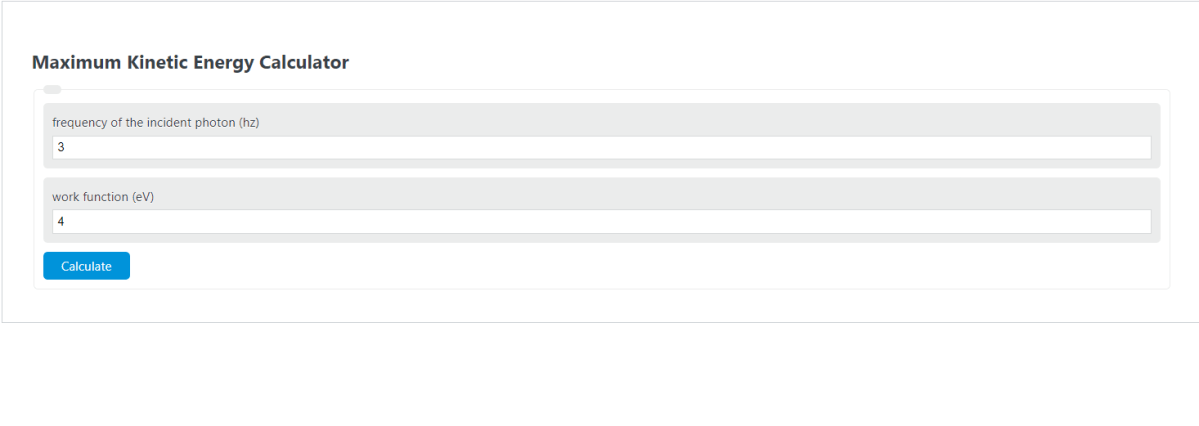Enter the frequency of the incident photon (hz) and the work function (eV) into the calculator to determine the Maximum Kinetic Energy.
- All Energy Calculators
- Frequency To Energy Calculator
- Wavelength to Energy Calculator
- Photon Energy Calculator
- Kinetic Energy To Torque Calculator
Maximum Kinetic Energy Formula
The following equation is used to calculate the Maximum Kinetic Energy.
Emax = h*f-W
Variables:
- Where Emax is the Maximum Kinetic Energy (eV)
- f is the frequency of the incident photon (hz)
- W is the work function (eV)
- h is Planck’s Constant (4.14*10^-15 eV*s)
To calculate the maximum kinetic energy, multiply the frequency by Planck’s constant, then subtract the work function.
How to Calculate Maximum Kinetic Energy?
The following two example problems outline the steps and information needed in order to calculate the Maximum Kinetic Energy.
Example Problem #1:
- First, determine the frequency of the incident photon (hz). In this example, the frequency of the incident photon (hz) is measured to be 9.
- Next, determine the work function (eV). For this problem, the work function (eV) is calculated to be 4.
- Finally, calculate the Maximum Kinetic Energy using the formula above:
Emax = h*f-W
Inserting the values from above and solving the equation with the imputed values gives:
Emax = 4.14*10^-15*9-4= -4 (eV)
Example Problem #2:
Using the same process as example problem 1, we first define the needed variables outlined by the formula. In this case, the values are provide as:
frequency of the incident photon (hz) = 3
work function (eV) = 4
Entering these values into the formula or calculator above gives us:
Emax = 4.14*10^-15*3-4=-4 (eV)
